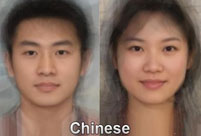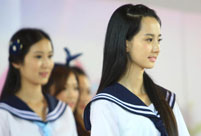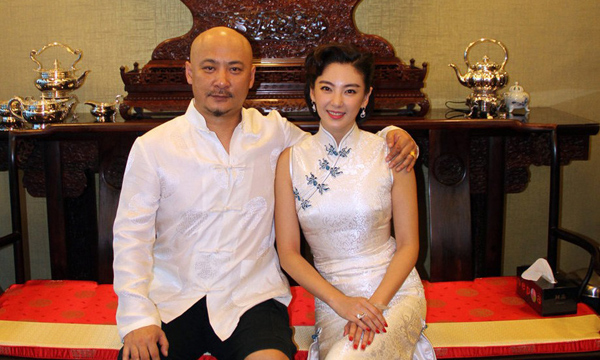 Picturesque autumn scenery of Hongshan Army Horse Ranch
Picturesque autumn scenery of Hongshan Army Horse Ranch
 Lingerie show at 2014 Miss China
Lingerie show at 2014 Miss China
 Swans begin to migrate from Xinjiang
Swans begin to migrate from Xinjiang
 30 romantic and beautiful sceneries around world
30 romantic and beautiful sceneries around world
 Rare photos of China's last emperor Puyi
Rare photos of China's last emperor Puyi
 Beautiful autumn leaves around the world
Beautiful autumn leaves around the world
 Foreign students' colorful life in China
Foreign students' colorful life in China
 Fantastic tour to Tibet
Fantastic tour to Tibet
 Opps! What a coincidence!
Opps! What a coincidence!
 Breathtaking scenery in Redstone Park in SW China
Breathtaking scenery in Redstone Park in SW China
At Yinta Mosque in China's Muslim heartland, Tian Xinghong teaches other Muslim women scriptures from the Quran every morning from 6:30 to 9:30.
The 28-year-old, wearing a black robe and pink scarf, has 60 students at the mosque in Wuzhong in Northwest China's Ningxia Hui autonomous region, where many of the country's Muslim Hui ethnic minority live.
Although Muslim women pray at home, Tian also leads them in prayer and chanting on special occasions such as festivals, either at a women's mosque or another mosque's restricted areas for women.
She is a female imam, or ahong, pronounced ah-hung, from the Persian word akhund for "the learned." In China, female imams, rare in Arab countries, are an innovation.
Tian was born into a religious family. Her grandmother was one of the first female imams in Ningxia.
She was sent to a local mosque at the age of 12 to study Islamic scripture and furthered her studies at a Chinese-Arabic school for girls in neighboring Gansu province in 2001, where she studied Islam and Arabic.
In 2003, Tian passed a qualification test organized by the regional Islamic association to become an ahong. More than 300 Muslims applied for the test and, of the five female applicants, Tian was the only one to pass.
"Many female Muslims did not have much formal education, especially the elderly. Although they are Muslim, they know nothing about the Quran. I want to teach them the holy scriptures and hope they can be inspired, think independently and have their own careers," she said.
Tian's husband is an imam at Wunan Mosque, the biggest mosque in the city. In addition to her religious duties, Tian takes care of their two children.
In the late Ming Dynasty (around the 17th century), followers of the faith set up schools for Muslim women and girls around the country. These later became mosques for women operated by female imams in the late Qing Dynasty (around the 19th century).
Female imams then spread throughout Chinese Muslim societies.
During the "cultural revolution" (1966-76), religion was banned. It was revived in the 1980s, leading to growing numbers of Buddhists, Taoists, Muslims and Christians, among other faiths. The government's push for gender equality helped broaden Muslim women's roles.
However, China's female imams do not have equal status to male prayer leaders. They do not lead salat, the five daily prayers considered among the most important Muslim obligations. The prayers are instead piped via loudspeakers into women's mosques from the nearby mosques for men.
Still, the female imams guide others in worship and are the primary spiritual leaders for the women in their communities. In the women's mosque, women can study the Quran and Islamic doctrine, as well as the Arabic language.
In the Litong district of Wuzhong, where Tian lives, there were 12 female ahongs out of 600 registered ahongs as of the end of 2013, said Tian Xuewu, an official with the district religious affairs administration.
"Whether male or female, whoever can teach us the Islamic scriptures and religious knowledge is our respected ahong," said Du Shaocheng, who prays at Yinta Mosque.
8.03K
 Standard faces for each countries
Standard faces for each countries Who is China's campus beauty queen?
Who is China's campus beauty queen? Netizens fall in love with champion swimmer Ning Zetao
Netizens fall in love with champion swimmer Ning Zetao Vibrant 21-year-old and her own Cheongsam brand
Vibrant 21-year-old and her own Cheongsam brand Fashion style: Faye Wong vs Cecilia Cheung
Fashion style: Faye Wong vs Cecilia Cheung Jungle law: leopard preys on impala
Jungle law: leopard preys on impala Female bus driver drives Land Rover for commuting
Female bus driver drives Land Rover for commuting Leading director Wang Quan'an detained for 'buying sex'
Leading director Wang Quan'an detained for 'buying sex' Amazing aerial photos of China's Xisha Islands
Amazing aerial photos of China's Xisha Islands Top 10 Chinese goddesses
Top 10 Chinese goddesses  Top 20 hottest women in the world in 2014
Top 20 hottest women in the world in 2014 Top 20 most beautiful Chinese stars
Top 20 most beautiful Chinese stars Top 10 fifth generation jet fighters in the world
Top 10 fifth generation jet fighters in the world Top 10 pure beauties in showbiz
Top 10 pure beauties in showbiz  Top 10 world's highest-paid models 2014
Top 10 world's highest-paid models 2014 The most gorgeous Chinese women
The most gorgeous Chinese women Top 10 most handsome faces in Asia
Top 10 most handsome faces in AsiaDay|Week|Month